Artificial Intelligence – Challenges and Future Directions in Online Education
Ms. Torunn Gjelsvik
Hello everyone and welcome to this session on artificial intelligence in the context of education. I am Diego Maranan from the University of the Philippines Open University and it is my great pleasure to introduce the speaker for this session, Torunn Gjelsvik from Oslo in Norway. Torunn Gjelsvik is the Secretary General of the International Council for Open and Distance Education, the ICDE. With more than 20 years of experience in distance and online education, she has held several executive leadership positions in various educational institutions and organizations including the national membership association, Flexible Education Norway. She has held the position of Head of Development at the ICDE secretariat and her international experience covers policy development, international networks, global events, and cross-country project management related to the global field of open, flexible, distance and online education. Torunn Gjelsvik represents Norway in the NVL Digital Network of the Nordic Network for Adult Learning and serves on the online education advisory board of BI Norwegian Business School.
The video presentation has been pre-recorded and we will have the Q&A forum after the video presentation. However, you can post your questions in the chat box at any time and during the Q&A, I will read your questions and Torunn will respond live, orally. So please welcome Torunn Gjelsvik.
Good morning, good afternoon, good evening to everyone and greetings from the ICDE secretariat in Oslo, Norway. Thank you very much for the invitation to speak at the ICODEL conference on this very pertinent topic of artificial intelligence, challenges, and future directions in open, distance, and online education.
Let me first start with a brief introduction to ICDE. ICDE was first established as the International Council for Correspondence Education back in 1938 in Canada. We are the leading and oldest membership association in our field. As a non-profit NGO, the association has since 1988, been hosted by Norway with financial support from the Norwegian Ministry of Education and Research and this is why the secretariat is based in Oslo. ICDE has also been in a formal consultative partnership with UNESCO since the 1960s.
The purpose and main goal for ICDE has been the same throughout our long history. It is to foster inclusive access to education through appropriate teaching methods and technologies. It started with correspondence letters, and continued with broadcasting educational radio, TV, and other mediums as well as regional and local study centers allowing for blended distance learning provisions. Now more and more learning is facilitated through the internet and through mobile applications but distance education still comes in many formats and variations across the globe. Our global outreach is seen on this map. We have over 330 members and partners across 70 countries in the world and the members are educational institutions, associations, private companies, individual experts, and students with interests in the field of open, flexible and distance learning.
Through the engagement of our members and partners, ICDE is able to undertake projects, organize conferences and events, and disseminate the latest knowledge and research in our field through our expert networks and special interest groups that our members take part in.
Over to today’s topic, artificial intelligence and the relevance for education and learning. Starting with the definition of AI, where there are many. This one is from Wikipedia: artificial intelligence is intelligence demonstrated by machines as opposed to the natural intelligence displayed by humans or animals. A leading AI textbook defined the field as the study of intelligent agents, any system that perceives its environment, and takes actions that maximize its chance of achieving its goals.
Why is AI relevant to education? UNESCO states that artificial intelligence has the potential to address some of the biggest challenges in education today. Innovative teaching and learning practices can ultimately accelerate the progress towards sustainable development goal number four. The UNESCO director general says artificial intelligence can be a great opportunity to accelerate the achievement of sustainable development goals but any technological revolution leads to new imbalances that we must anticipate. This is why UNESCO has committed to supporting member states to harness the potential of AI technologies for achieving the education 2030 agenda while ensuring that the application of AI in educational contexts is guided by core principles of inclusion and equity.
I have collected some links and reports from UNESCO that elaborates on their mandate and calls for a human-centered approach to AI. It aims to shift the conversation to include AI’s role in addressing current inequalities regarding access to knowledge, research, and the diversity of cultural expressions. The purpose is to ensure that AI does not widen the technological divides within and between countries. The promise of aid for all, must be that everyone can take advantage of the technological revolution underway and harvest its fruits in terms of innovation and knowledge. The Beijing consensus on artificial intelligence and education is published in 2019 in six United Nation languages, and is a foundation for UNESCO’s human-centered approach. The AI and education guidance for policymakers is a recent publication from 2021 that offers guidance for policy makers on how to best leverage the opportunities and address the risks presented by the growing connection between AI and education. There is also the report on developing AI competencies and two best practices compendiums on AI and education.
UNESCO is also preparing a recommendation on ethics in artificial intelligence that should be approved by the UNESCO member states on November 21. A new global report, “Reimagining Our Futures Together” is also underway.
So what can artificial intelligence do for education and learning? This slide is drawn from a slide deck presented by Fengchun Miao, the chief for the unit for technology and AI and education at UNESCO. You might be familiar with some of the technologies that are presented such as speech recognition, autonomous agents or chatbots, and data mining for prediction of behavior. Fengchun Miao presented at the UNESCO conference, launching the project on AI and the futures of learning on the 30th of September this year and among other things, he highlighted the unleashed potential of AI if being moved from solving low skills tasks to more higher order tasks such as personalized learning and innovative pedagogies.
He states that revolution of AI in education will not happen until it enables student agency and knowledge creation. Now, I will be moving over to the next part of the presentation, where I will focus on what ICDE members and partners are working with related to AI in education. These members and partners come from Argentina, France, Norway, and China. Only representing a small sample which is what the time allows me to present to you today.
I’ll be starting with an example from Argentina. Presented by one of our individual members, Professor Nora Lizenberg, who is the Director of Department at Cámara Argentina de Comercio y Servicios. The university, CAECE, is a higher education institution in Argentina and since its origins more than 50 years ago, the university has focused on innovation, science, and technology. It is a part of EDUCAC, an educational ecosystem supported by the Argentine Chamber of Commerce and Services through the CAECE foundation. Last year, it created a new academic department which is the Department of Educational Innovation, under the direction of Nora Lizenberg to promote hybridization and digital transformation across its teaching staff. The department is also in charge of facilitating the complete university online offer.
Through its extension area, the university interacts with society. Offering OER and free open courses on AI in general, as well as machine learning for business and artificial vision. In formal education, the university delivers a master’s in data science and business innovation program in both traditional and online formats. Unlike other programs, this educational initiative promotes the training and inclusion of people who are not strictly related to computer science or mathematics in the use of AI. For next year, the university is expected to launch a new online graduate program in educational innovations that includes artificial intelligence specifically applied to education. The university will also launch an undergraduate program in data science in both face-to-face and distance modality.
With these OERs, open courses, and formal programs, the University of CAECE aims to reach the Spanish-speaking community with innovative and updated education to help leverage the regional landscape into the needs of the society of the fourth industrial revolution. The University CAECE also has a specific center for artificial intelligence and emerging technologies. This research and development center aims to support the implementation of projects that would arise as outputs from the master’s program. Thus it will join the efforts of humanities and sciences to leverage employability and business opportunities for more people in the region and in the Spanish speaking community.
Now, over to China. The Open University of China is one of the world’s mega providers of open distance education serving 2.7 million students through a large network of regional universities, branch schools, and district local stations. In 2020, the Open University of China was awarded the UNESCO ICT in Education prize for a program that uses AI to provide learners from rural and remote areas with quality learning opportunities. The program works through a smart learning platform using voice and semantic analysis, automatic feedback, automated essay scoring, and big data analysis which allows an increasing number of learners from rural and remote areas to benefit from quality learning experiences.
Following the 2020 UNESCO prize for the use of ICT in education, the Open University of China has made the following efforts in promoting the use of AI in its strategic administration. They’ve been forming a proprietary work team for the establishment of the ai undergraduate program. signing an agreement with Baidu, Alibaba and Tencent (BAT) to provide learners with high quality online AI courses and resources for free. More details and links can be found on this slide.
The Open University of China has built an internet plus intelligent teaching demonstration center, integrating AI, holography, virtual reality, technology holographic classrooms, virtual studios, and intelligent calligraphy classrooms to provide a high quality teaching environment for both teachers and students. The Open University of China was successfully enlisted in a pilot project for AI boosted teaching team construction initiated by the ministry of education. AR robots play multiple roles in empowering OUC teachers and when students ask questions in the intelligent learning platform, the system can launch functions such as speech recognition and semantic analysis to identify students intentions and match them with the most desirable answers. Through the text dialog this AI supported method enables students to find out answers by themselves. To this date, more than 76,000 self-service Q&A sessions have been offered.
The Open University of China has conducted research on knowledge graphs with the aim of serving their online courses. A knowledge graph for each course is being constructed by collecting original course data and extracting knowledge. Student behavior and learning knowledge points are marked and presented using visualization, technology which enables them to check their learning status and how they understand their own knowledge points. In terms of teaching evaluation, the automatic correction of assignments has been realized by means of natural language understanding and optical character recognition technologies. Facial recognition technology is used to check the identity of test takers at the entrance to test venues. Automatic facial image capturing technology has been adopted to realize the accurate verification of test taker’s ideas.
The Open University of China has also established a big data monitoring center to gather multi-dimensional real-time data including enrollment, educational administration, cloud classrooms, and public opinion in order to provide teachers and students with learning monitoring during the whole teaching process. In August 2020, at the AI plus education development sub-forum of AI expo 2020, an agreement was signed to establish a new generation, information technology college and released the white paper on the development and application of AI plus higher education.
Now, moving from China to Norway. The Norwegian Open AI Lab (NAIL) is a hub for research innovation and education within AI. And this center is hosted by the Faculty of Information
Technology and Electrical Engineering at NTNU in Trondheim. It stands for the Norwegian University of Science and Technology in Trondheim, Norway. The Norwegian Open AI Lab engages in a variety of research and innovation activities with several ongoing projects and a strong team of AI researchers. The lab is connected to various partners coming from both the public sector and the business side. NAIL works to disseminate knowledge about AI to a diverse audience by organizing events and activities and they’re aiming to develop strong partnerships between academia, students, businesses, and public sector organizations. So they welcome Norwegian companies and organizations to join as partners.
Here, you see the strategic research areas that they focus on. And let me briefly just explain this course, “Elements of AI”. It’s a free introduction course to artificial intelligence, suitable for a wide audience. It was first developed by the University of Helsinki in Finland and has been translated and made available in Norwegian by NTNU and the Open AI lab. This course is available in several other European languages through the link: elementsofai.com. And now let me explain about the Nordic Probabilistic AI School. This ProbAI, as it’s called, is to create an inclusive environment serving a state-of-the-art expertise in probabilistic machine learning. The school is considered to be of an intermediate to advanced level. Covering topics such as probabilistic models, deep generative models, latent variable models, interference with sampling and variational approximations, probabilistic programming and tools, and some of the latest research. PhD students have the possibility to be awarded with credit points. However, the school is open to everyone: professionals in academia and industry and the broad public. ProbAI was organized for the first time in 2019 at NTNU in Trondheim and due to the pandemic, the edition this year turned digital. InterNew received more than 400 applications to attend ProbAI 21 and a few more than 200 were selected to attend. So it shows a great interest and next year, ProbAI will be organized in Helsinki, Finland. Here are the contact details for NTNU, if you’re interested in learning more about their activities.
Now moving to another Norwegian ICDE member. It’s SLATE, the Centre for Science of Learning and Technology at the University of Bergen. This is the national research and competence center for learning analytics funded directly by the Norwegian Ministry of Education. SLATE carries out research that explores and clarifies concepts such as learning analytics, big and small data in education, AI and education, assessment for learning and creativity, learning and technology in all facets of human learning.
According to the Higher Education Commission in the United Kingdom, learning analytics has enormous potential to improve the student experience at university. As learning has been moving online, even before the pandemic, opportunities for data analysis are expanding like never before. Actions a learner takes in an online learning environment generates raw data that can be translated into meaningful and actionable information. The research team at the Centre for the Science of Learning and Technology (SLATE) at the University of Bergen has developed a learning analytics tool that uses artificial intelligence for the Open edX platform. This tool provides a technical solution of a learning analytics module for MOOCs (Open edX), the free and open source version of edX. The tool is data-driven, a data-driven application and establishes a direct impact on teachers’ decisions and indirect impact on students based on activity data. These data are processed using algorithms from unsupervised machine learning. As a result of the machine learning methods, the teacher can classify the students and see visualizations of their behavior. Some visualizations in the tools are built on complex data structure, which is in the nature of AI applications. The tool, OXALIC, has been used by several universities in Norway and you see the main features presented on this slide.
This shows the main interface of the tool. The instructor can choose from a number of visualizations. In this view, the teacher examines how much time the student spent on their course, which can be used as a measure of activity. Statistics, such as total number of sessions, number of persons who have been in the course. In the course pages, the amount of time spent on the courses pages by all persons, are summarized in the table and shown graphically. On this view, the teacher has chosen to investigate the video views and gain insight on how her students watch the course videos. In the top graph, the teacher gets an easy overview of all the videos and how much they have been used and can see which one have been viewed in the list; the least or the most. For example, the video number three, was hardly viewed at all. The teacher used this information to, for example, decide to remove the video from the course or to investigate further why the students did not watch it. The video number 10, on the other hand, has been viewed a lot. By hovering over the video 10 slide, the teacher sees the general stats of how much the video was loaded, played, stopped, seeked, and paused.
Another feature is that the teachers can get an overview of all the students with the summary of the number of events that they have created, how many sessions they have had, and how much time they have spent on the platform. A learning analytics algorithm determines if the amount for each type is colored red, it represents low activity, yellow or green, high activity. Giving the teacher a quick overview of students that might be having a hard time, are not engaged, etc. Teachers can easily intervene if needed, through a number of actions that are provided. For example, as shown by the number one, the teacher selects an action zoom call, and an email will be sent to the student asking for a zoom call. The tool allows the teachers to define what kind of notification he or she wants. Current directions for this research work include developing automated feedback to the students, and map student learning processes.
Moving over to France, Loria is the french acronym for the Lorraine Research Laboratory in Computer Science and its applications.This is a research unit hosted by the University of Lorraine and Indriya National Institute for Research in Digital Science and Technology in France. This presentation is brought to us by Geoffrey Bonnin, who is an Associate Professor at the University of Lorraine. The University of Lorraine is also a member of the French digital university, University Numerique, one of ICDE’s most active members in France.
Bolstered by the 400 people working in this lab, its scientific work is conducted in 28 teams including 15 commons teams within Indriya. It is composed of five departments, and one of them is the Complex Systems Artificial Intelligence and Robotics department, where the BIRD group, Building Artificial Intelligence Between Trust, Responsibility and Decision is located. This group focuses on the design and development of trusted artificial intelligence which aims to respect technical human and societal values. This means that humans are at the center of their work and their specificities are integrated in the development of their models. The latest updates about two of their ongoing projects will be presented here. The LINUMEN project and the METAL project.
Starting with the LINUMEN project, a new model of response inhibition. This project is dedicated to the co-design and evaluation of a digital device promoting the acquisition of skills related to emerging literacy and numeracy for preschool children. The app, AppLinou, is a part of a group of initiatives aiming to promote and make available to teachers and students the devices and applications resulting from research work which use artificial intelligence, learning analytics, or human machine interfaces with the aim of promoting success for all. This application can, for instance, be beneficial for children with autism spectrum disorders. BIRD has proposed an automatic approach that is capable of modeling the children’s dysfunctional inhibition behavior using data from the AppLinou.
The METAL Project: New Educational Recommender System, aims to design, develop and evaluate a set of individualized monitoring tools intended for students or teachers through learning analytics. The new educational recommender system involves innovative technologies for personalized learning of languages in writing, French grammar, and orally pronunciation of modern languages. It thus contributes to improving the quality of learning and to the development of language proficiency by students. The recommender system has been integrated into new teacher and student dashboards, using a new participative conception approach. This conception involved the teachers and students before the initial conception phase, which allowed them to acquire very fine grained information about the habits and the culture of the future users of these dashboards, time when the dashboards would be used, type of devices etc. The student dashboard includes two data mining algorithms also proposed by BIRD. Both dashboards include some form of educational recommendations that aim to recommend the right resources at the right time.
Moving over to the next project, it’s X5-GON. It is a European Horizon 2020 project that provides solutions for students and users to find open education resources in repositories and across the web. It is an AI driven platform that delivers OER content from everywhere adapted to students’ needs at the right time and place and this solution will adapt to the user’s need and learn how to make ongoing customized recommendations and suggestions. This presentation is brought to us by Colin de la Higuera and Davod Orlic from K4A Knowledge for All. Here you can see an overview of the European partners involved in this project. The five Xs refers to format, language, topic, platform, and culture, and the goal of the project is to allow users access to OER across these variations. X5-GON, in a nutshell, is an AI enriched OER collection repository or catalog where OER are ingested, transcribed, translated, analyzed, and indexed. Rich machine learning models are built allowing us to understand who the OER is for, level of difficulty, related resources, that should be viewed before or after, etc. X5-GON also provides a set of three interfaces allowing to use this data. It’s the X5-API which openly allows all models to be accessed individually by any platform. The X5-Learn, which allows individual learners to learn online with OER and the X5-Moodle which allows teachers to include these tools in the moodle learning management system. The X5-GON collection consists, as of now, more than 120,000 OER from 20 different repositories in 25 languages. The resources can be searched and viewed in 10 different languages and direct search is possible through the added link. Here is a visualization of the process. Starting with the ingestion of resources, which are first being transcribed and translated into different languages, and then through a semantic analysis, and modeling by machine learning, the resources are stored and indexed in the platform. AI is a crucial component enabling all steps of the process.
Some difficult research questions have been addressed. The transcription tool and technology can be checked through the link in the slide and complex AI models have given answers to questions, assessing the quality and levels of OER as well as recommended order of appearance when using these OER. Some challenges still remain, only in Europe there are many different languages poorly represented by OER. Can data based on usage rather than the users be more significant? OER, like other resources, will always be applied in a specific cultural context; not only linguistic. So cultural adaptation is a more complex issue than translation and transcription.
Moving to the last example presentation from ICDE members and partners, Colin de la Higuera is a UNESCO Chair in Open Education Resources at the University of Nantes in France. The project, FLORILEGE, uses X5-GON technology and aims to respond to the need of a centralized index of francophone OER. A point of departure is this potential, as well as some of the major challenges of OER, and one identified problem is the lack of a centralized index of OER in French. For historical reasons, the licensing of OER is inconsistent. In French, this is very much the case as many resources would have either no licenses, old licenses, or licenses that were open at a time but are not correctly openly licensed today. Local licenses that can’t be aligned could also be the case. The goal of FLORILEGE is to build an AI driven index of francophone OER relying on the X5-GON technology. This technology allows for automatic analysis of content, as well as search through the actual texts, not only the metadata, and recommendation of what we are to users with special learning needs, and finally to automatically build individual learning paths.
I have now shown you a sample of initiatives and projects related to artificial intelligence that are currently being undertaken by some of ICDE’s members. If you have particular questions related to any of the presentations, you may take contact with the authors directly or send a request to ICDE to make the contact.
Before drawing this presentation to a close, let me go back to the title and heading of challenges and future directions for open distances on online education related to AI. With regards to potential, it is clear that artificial intelligence used to its fullest potential could help solve fundamental challenges in the education system. Allowing for increased inclusive access to learning, for example, by accommodating for various special needs or learning disabilities. AI can accommodate for more personalized learning paths suited to each individual’s needs and at the same time, allow for scalability due to the strength of the technologies. So the potential with AI and OER has also clearly been demonstrated by the latest projects and initiatives presented here today and it’s something that we will see more of also in the future.
With regards to challenges, there are still many. Several of these are addressed by UNESCO in their policy related work in preparation of the new recommendation. The AI competence encompasses both values, knowledge, and skills, and transcends the education sector as it should enable citizens to engage critically in the development of AI both inside and outside of the learning environments.
Back to the potential of OER, with relation to artificial intelligence, let me just conclude by giving some examples of ICDE’s work in this domain. As a member of the UNESCO OER dynamic coalition, ICDE supports in multiple action areas in the implementation of the UNESCO OER recommendation both through our advocacy committee for OER, and through concrete projects. The ICDE-francophone OER project is established through a collaboration between UNESCO, the French Digital University, and with substantial contributions from the OER universities in New Zealand. The encore project is a European erasmus plus project, knowledge alliance project, aiming to establish a network for catalyzing OER in education and developing innovation and entrepreneurship with OER that benefits both academia and business. Through one of the partners, Knowledge for All, the X5-GON platform is also connected to this project and the FLORILEGE project, presented by Colin de la Higuera is highly relevant for the francophone OER project.
Should you wish to connect with the encore plus project, you will find the contact details and web address on this slide. Although the scope of this project is Europe, the project in its nature wishes to connect with the global OER community. So please take contact should you be interested in learning more.
Finally, we expect to see crucial developments in the field of AI and OER thanks to our members and partners across the globe and the network we facilitate through the organization of ICDE. We welcome new members to join our global community and follow us on social media through the newsletter and also through our open scholarly journal open practice. Don’t miss out on our upcoming conference, the ICDE Virtual Global Conference Week. We have a full program consisting of keynotes, poster lightning talks, academic paper presentations, workshops, and panel discussions circling around the topic of upskilling and upscaling for quality, open, flexible, and distance learning.
Finally, thank you so much for your attention. Allow me also to thank all the ICDE members and partners who contributed to this presentation. I have only showcased a few examples of what exists in the field and I hope it was useful to you. Thank you very much.
—————————–
Hello everyone and welcome to the Q&A session of Torunn Gjelsvik’s talk which you’ve just seen. We’re excited to have Torunn joining us on this call and live all the way from Norway. For this session, we’re also absolutely thrilled to have two additional guests joining us on this call by Torunn’s invitation: Mr. Colin de la Higuera is the UNESCO Chair in Open Education Resources from the University of Nott in France and Colin is calling in from the UK. We also have
Professor Barbara Watson joining us from Norway. Barbara is the Director of SLATE, which is the Centre for the Science of Learning and Technology at the University of Bergen in Norway.
So just a reminder to everyone, please use the chat box for greetings and informal exchanges but as much as possible, please post your actual questions in the Q&A box. I have noted the questions that were in the chat box. So you know, we’ve captured those. I think questions in the Q&A box can be answered either live or typed out. Our preference is to answer it live, but I suggest for our panelists that if we start running out of time, you can start typing out answers. But for our first question, Colin actually had a question- the very first question. It kind of also addresses some of the questions that Melia Santos had posted in the Q&A box. So, Colin, do you want to field your question?
Hello! Good morning from France or Britain, where I am, and good afternoon for where you are. So my- no my question was when I was looking at the names and I think the question will come back; this AI for education is growing. So the beginning was good because we were doing very amateur sort of stuff where we needed very little funding and where we didn’t have the implications necessarily that we have. But now today, these projects become very quickly important and they need to mature. To mature we are tempted or we can be tempted to work with industry, but not just industry, very big industry. And then we have a- I don’t know if we have a problem or not, and this is where I wanted to ask my question. Because depending on the regions of the world, working with a very big industry is actually going to be seen as a break to be able to address the question of education. Education is a specific sector and so I know in France that is the case. I know because we had last, where two weeks ago we were hosting the conference, Open Education Global, and I know that is an issue also in Latin America. So I don’t know how people can feel this and Torunn especially. Are we on a sort of… how easy… how should we deal with these big projects? Because AI costs money, how should we deal with working with industry?
Yeah, thank you, thank you, Colin. It’s a very very pertinent question and I think it comes alive with the potential and the challenges. On the one hand there’s this big potential for inclusiveness for adaptive learning, but it’s also business opportunities as you say for the big companies and a lot of money in it. I don’t think we can avoid talking with the industry because the technologies will develop anyhow. And it’s very important that the government’s involved on a state level, especially regulatory legislative authorities but also educational leaders because we need all these stakeholders in the discussions and I don’t think it’s a solution to just stick the head in the sand and avoid talking with them but rather, highlight the challenges. There are the ethical considerations, the risk of leaving people behind especially where technologies have developed on different stages. So we need to address these issues and discuss them and be as transparent as possible. I also believe that all this policy related work that UNESCO is doing in this field, especially with the policy guidelines, the upcoming recommendation, the purpose is to give some advice and guidance for the various stakeholders in this development.
I guess, as a follow-up to that question, Melia Santos had this question on the Q&A box. The question is around working with the private sector. “We are particularly interested,” she says “in
pursuing collaborations with industries (telcos, commercial tech providers) and we are new to this. So could you share some best practices caveats and general guidelines for ethical engagement between academia industry?”
Yep, perhaps my colleagues would like to take the floor here because you are in this field from your different institutions. How has that been? Perhaps starting with you Barbara?
Yeah, I think the big issue here is something that Colin was in on and also Torunn has this education is very culturally anchored. For instance, the big American platforms don’t necessarily work in Norway because it’s a very different approach to education. This is one of the biggest issues. I think, and when we even look at the people doing research on datafication, it is a field if you’re interested in finding work on the platformization of education and things like that. “Who’s making the decisions about what happens in education?” It is a big issue and how to have these dialogues is not that clear if you have a small, in Norway we work with in one of our projects with small SMEs and then it’s much easier because they’re right, you know you can get in contact with the right people and you can work with them but the larger companies it’s much more of a problem. So I think it has to happen on a governmental level like Torunn said where you have to have the right actors in asking these questions and there are researchers that are asking these questions now there is a movement so datification platformization, look at that. The thing about technology is when we put technology into work practice or learning practice, we’re changing that practice and the way things are done.
So for instance, in Norway we have one platform that’s used for examinations and right beside where students can go in and get their marks or how they did on an exam, there’s a button that says “Ask for an Explanation”. And they have to just press this button and they have to give a lot of work to all the academics that have been doing the exams and giving the scores to come with large explanations as to why they got these marks that they got. Now, there’s not a problem with that because that’s legally allowed that’s legally frank, anchored in the Norwegian law that they can do that but by making it just a little button that’s in this tool, it doesn’t put the student through a reflection phase or anything. They just get in there and they can push this button. In that way, they don’t take away this reflection phase where they maybe go and think about it for a day and think about their answers etc., you know? So just by changing and putting technology in, we have to reflect over it.
The large companies, a lot of these decisions, excuse me, are made- I’m a computer scientist myself, are made by computer scientists that don’t think about sort of the pedagogical aspects of what’s doing. A lot of that, for example, with these large visualizations, you can make very fancy visualizations but we know from studies on what we call “data literacy” that most teachers and instructors cannot interpret the visualizations we give them. So this is why I see in some of the projects Colin was talking about, in our projects, we always do, the LORIA project Torunn presented. We always do these participatory designs now with teachers, to make things for them. And that way, you need maybe the larger corporations can’t provide that level of, you know, I’m thinking of the Norwegian word, the tilde passing. Making it relevant for the culture that you’re working in. So that’s some things to think about.
Just a quick follow-up to that, Barbara. I was just you know, I was thinking about the amount of training that needs to happen with these machine learning models. I’m wondering to what extent educators are involved in their training or you know as all of this. Yeah, I see you shaking your head.
Sorry, that is a big issue. Colin can probably say a lot more about it because they’re doing the learning, the training of finding the OERs. But I mean the data that we use to train models is extremely important and it’s usually biased and you know a lot of the algorithms are from, you know, western people that are like yourself and you don’t necessarily then get the variety of types of learners that are around. To generate the data or to get the original data to train the algorithms on is very very difficult to find a good. So we have to be aware of the biases and the cultural differences and aspects but maybe Colin can say more since they’re working with international data.
So yeah, so data is complicated there was one… in one of the slides there was the sentence replace user data by usage data. So it might sound naive. The idea is that in these projects like X5-GON, we spent most of the project fighting, not for data, but fighting to explain to everybody that no, we were not tracking them. Yes, we were respecting the laws. Because education is such a specific topic, people are very aware. For example, collaborating with schools or universities on a large scale is very, very difficult if people don’t have complete clarity about what you’re doing and how you’re going to work with their data. Logically, the university feels responsible for the data of the students and the data of the university. So little by little, we shifted from that idea of collecting user data, which is the typical way of doing machine learning, right? To a way where you’re saying, “Well, we don’t want to know who has done what”, right? All we want to know is big masses of, you know, as a group, “what is happening?” So this is what we’re calling usage data to try and actually reassure the universities. So that we do have data because you, I mean the strength of machine learning and the strength of industry, that is where industry usually gets better than us. It’s not because they’ve got just the wiser guys which sometimes they do, to be fair. But it’s because they get hold of, they’ve got policies and strategies and platforms to get hold of so much data. So if we want to have good platforms, we need good data and we’ve just got to think it all around to do this. But in our case, no, we are not individualizing data towards the specific teachers. Again, because that would bring in users and that is a blocking point, at the moment. People are not confident about these technologies. That’s also been pointed out in slides, the cultural aspects are very so much important and we haven’t solved it. I think we’re only sort of touching the surface. What Barbara was, the example she was giving about the exams, I thought that was a great example because it will be different from country to country, the way people are working through education. All this adaptation needs to be done. Can it be done automatically? Unclear.
I have a question here about context as well by Melia Santos but I’m going to preserve that because then Coney Habitos has a question that I wanted to ask right now. She asks for the institution pursuing AI, was it initially academia-led? Meaning, these institutions presumably, had very strong computer science or engineering departments or was it industry business industry or
business-led and they were the ones who invited the academia to be involved? Who invited whom?
Yeah, you know, artificial intelligence- Sorry, go ahead Barbara, please.
I’ll answer quickly. Artificial Intelligence and education has been around since the 1970s so it’s not new. So it originated in academia, I would say. But now it’s raised itself to the political level. I mean at the UNESCO launch on the 30th of September that Torunn mentioned, there were heads of ministries from around the world talking about this. As a researcher I can say I have not seen this within any field where you’re seeing it, coming from the policy level down. You know, as a researcher, I sit there thinking “Oh, can we really do everything they’re promising?” Yet as Colin’s gotten into, we have many, many issues that need to be solved. So I think that a lot of it has come from within the universities where there are strong groups. Now, artificial intelligence education is not just for computer science people, of course. It has to have educational perspectives and psychology. Very, very, very tied to psychology actually as well. So you need interdisciplinarity.
Torunn, you were going to say something?
Yeah, I mean, Barbara, you basically covered it. As you say, it comes from academia and research. But we have seen for example, in Norway, it’s really the national government taking a stand here and by the decision of, you know, funding slate, and putting that center at the one of the biggest universities in Norway. Also the initiatives with NTNU and the AI lab, those are governmental initiatives. So we’re very clear from the policy level but it wouldn’t have happened without the research that you have been doing for years. But perhaps Colin can also fill in from your perspective?
Yeah, I would say, I mean obviously in Europe, we’re lucky. We’ve got a lot of European funding and money that can help us try out ambitious projects. The problem is, when the ambitious projects work and then logically, the funding is no longer and you have to decide what to do. This is the case of X5-GON, for example. So if X5-GON is now managed by a new actor called IRKAI, which is this category 2 UNESCO center based in Ljubljana, with the same people of X5-GON really. We’ve got this lovely tool, and the question is you know one big player says, “Yes, okay, we’ll buy it you know, and we’ll take over from now.” and you’re thinking, ‘well that can’t be right?’ right? But it can’t be right to let it die. So you’re, you know, we’re really in a lack of good models to go past the moment where we have developed a very nice tool, developed the AI there. Then you want to go from 120,000 resources to millions of resources, from 10 languages to 100 languages, and you just know that there is no tool to do this. So the answer to the question is, I think everything starts. I mean all these interesting questions come from the researchers, come from people who are saying “go to the conferences”, you’re listening to the talks, and you’re thinking there’s something missing. I mean, we could actually do this and then you find other people who think the same and you get the project and you hopefully get access to some funding. I think that the topic is important, so you can get access to funding.
Sorry, there you go. My mic went haywire for a minute. So there’s a question here, and from one of our 160 viewers, we have 160 viewers right now. And it’s related to what Colin has just said, “What implementation models are available for equitable and inclusive use of AI in education?” and she’s particularly interested in reputable models for lower, middle income countries like the Philippines where poor digital infrastructure and limited access are huge issues. Or is infrastructure just a matter of time? Are we kind of assuming that… yeah, yeah.
There’s some brilliant projects. For example, in India, there’s some brilliant projects where the issue is, India is essentially rural and so they are starting to try and use open education and AI but in rural situations where nobody has got access to the internet. And you’re thinking, ‘okay,
you can’t do it’. Well, they can, right? They can. So there’s obviously, in every village, a place where you can go and upload, so probably people do have some access through some type of mobile phones, if possible smartphones, even if of early generations. So you rethink things and they are doing great jobs there to train specifically, the women and there’s a lovely, lovely work done there. So I think that yes, it can be done. And I’m sure there’s other examples.
I imagine there might be interesting mesh type kind of implementations and distributed, you know, ways of doing this. But Barbara, were you…?
Yeah, I was going to say I think it’s architecture issues as well, right? Like how you design the back ends of systems and things like that. but it also brings up another issue that we all should be thinking about, is that these AI algorithms are expensive, electricity wise. So they’re not a very green solution at the moment. So we also need the research on the back side of it. Looking at how, you know, how it can be done in a more profitable way. You know, some of the algorithms as we know, generate an awful lot of need for electricity.
Absolutely. We are running out of time! I’m sorry, Torunn please.
I just wanted to ask Barbara and Colin the last question. What are your biggest concerns related to AI? Is it the funding issue? Sustainability issue? Inclusiveness? Or is it the biased algorithms that, especially you talked about, Barbara. Now bringing up the energy consummation, also challenging in this climate. Very endangered times. What are your biggest concerns?
I think for me, it’s you know the rights of children for the use of their data. That we have the, we don’t, the preservation of culture, of educational culture in the different countries and not allowing the pushover of the big companies to push their, you know, their platforms onto us. And that the research is listened to. Also it’s, I mean it’s nothing wrong with the big, big companies but I think that there’s a lot of the creativity work goes on in the small uni- you know, in the university research areas that have really been there for a while. That needs to get out because we have not been very good at getting that work out to the- so there needs to be this industry, university collaborations.
And I’ll just say I don’t have any concerns. I’m very optimistic, right? I really am. No, I really am. I think the community’s doing a great job. I think the role of ICDE, of UNESCO, the fact that we’ve
got big players like that are helping to control. There’s challenges but there’s- I don’t have concerns about the challenges.
With that, please let me thank Torunn Gjelsvik, Colin de la Higuera and Barbara Watson for this really fascinating talk. Yeah, thank you everyone! Have a good day.

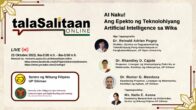
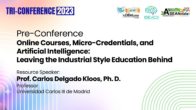
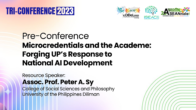
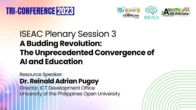
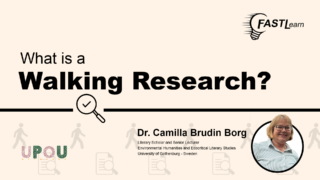

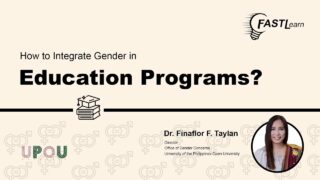
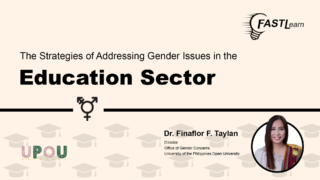
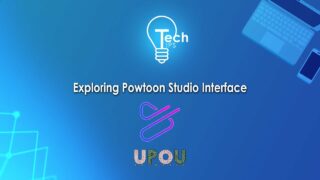
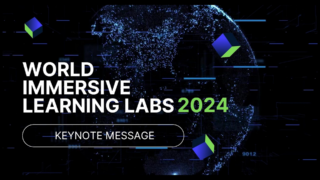
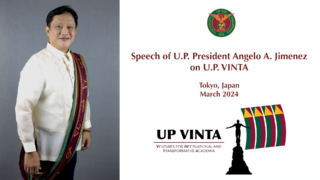
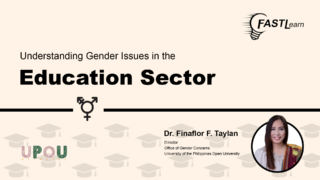
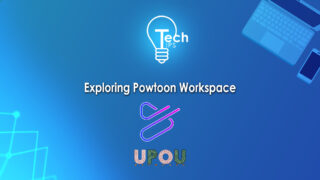
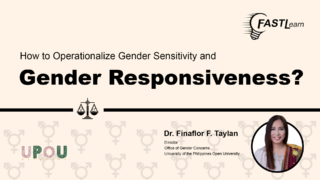
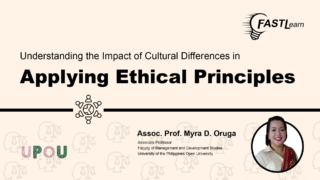
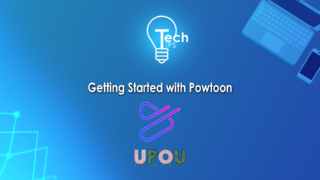
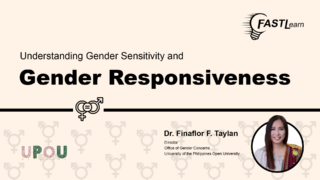
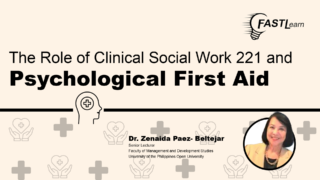
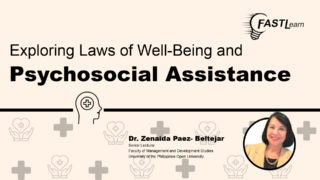
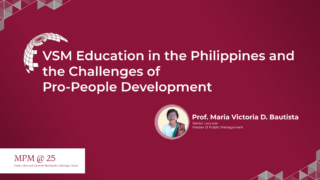
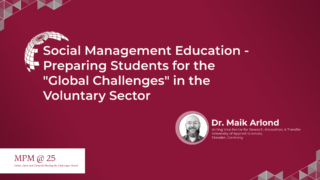
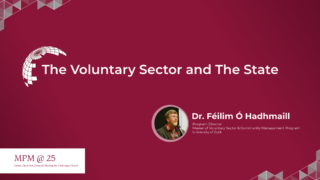
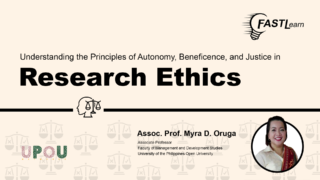
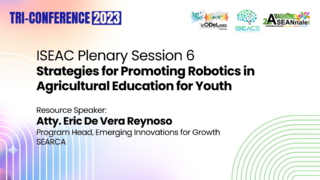
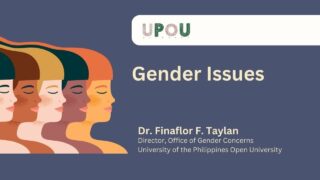
Pingback: International Conference on Open and Distance eLearning 2021 - UPOU Networks